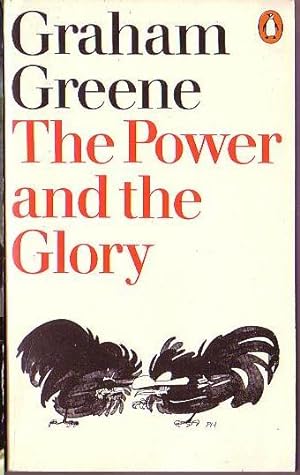
Also consider these LitLovers talking points to help get a discussion started for The Power and the Glory:
1. Why has this Mexican state outlawed the practice of Catholicism? What is its argument against the religion?
2. Why is Father Jose's presence tolerated by the state? What purpose does he serve for the government? What comparisons can you make between him and the Whiskey Priest?
3. Discuss the complicated character of the whiskey priest. What keeps him from leaving for another state, one more tolerant of Catholicism? Why does he continue to minister to the peasants despite the risk to his life? How does he view those he is so determined to serve?
4. In what way is the priest tormented by his faith...or lack thereof? What is the nature of his self-doubt?
5. What do you make of the fact that many have been executed as a result of their involvement with the priest, while the priest himself flees. Is the priest's sense of guilt justified...or not?
6. Talk about the priest's nemisis—the lieutenant? What are his motives for pursuing the priest? How would you describe him—as purely evil...or a more complicated character?
7. Follow-up to Questions #3 and #4: Graham Greene has given readers a priest who is hardly an exemplar among his peers. For what purposes would the author have created such a character—with his many failings—as the novel's hero. Why does the priest remain nameless throughout the novel?
8. Is the whiskey priest a martyr? Why does he himself not believe he is one? What does he mean when he says, "I don't think martyrs are like this"? What qualifies one as a true martyr?
9. What is the symbolic significance of the priest's misplaced Bible and other religious paraphernalia? What is symbolic about trading his clothes and donning those of a peasant?
10. Do you think Greene intended the priest to be a Christ figure? Do you see him as such? Why...or why not?
11. The culmination of the novel occurs in the jail cell. What revelation comes to the whiskey priest? What is the irony of an imprisoned body vs. the spirit?
12. How does the author portray Mexico? How does he use the setting of Mexico as an atmospheric/thematic backdrop for the novel?
13. What do you make of the fact that in 1953, 13 years after it was published, a Vatican curia condemned the novel and asked Greene to make revisions? Apparently the Vatican took issue with the corrupted character of the whiskey priest. (Greene made no revisions.)
14. Greene's novel explores the tension between belief and nonbelief. How does the story come to grips with that dichotomy? What is the central "message"? Is it one of hope...or despair?
15. Has reading this book altered, in any way, your faith, or your understanding of faith?
No comments:
Post a Comment